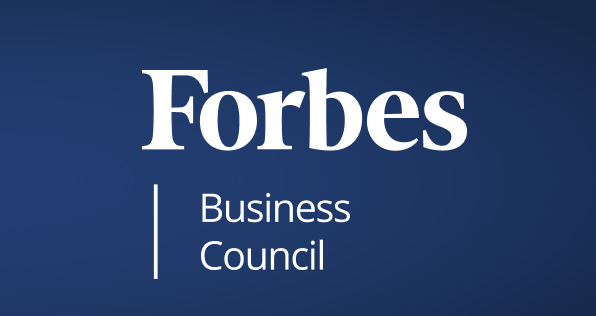Featured on Producers & Procurers iQ:
Putting greater emphasis on driving incremental value from the partnership, while maintaining traditional cost management and resource utilization.
— Read the published Producers & Procurers iQ article —
We are all familiar with the concept of asset management. This is something we intuitively practice when we manage a retirement account or savings. It refers to the “systematic approach to the governance and realization of value,” or stated differently, the value we hope to achieve through the management of these financial assets.
Similarly, I think about brand and marketing leaders as asset managers. However, their assets are not limited to financial ones. Their assets also include internal talent, know-how, IP, and tools, as well as external resources such as partnerships with agencies.
As with any other asset in a portfolio, agency partnerships can be managed effectively or not, especially these days as marketing is under greater organizational pressure. Therefore, the value realized from these partnerships is equally proportional to how effectively the assets are used and managed. Agency partnerships cover a wide range of activities—strategy, research and planning, ideation, content production and management, analysis, and performance optimization, to name a few. The rigorous management of these agency human and financial resources became critical in recent years under greater economic pressure, cost control measures, and fiscal tightening. Today, most companies have already cut most of the fat (e.g., excessive costs or poor management of external talent) and are now fit enough to compete successfully.
Stated differently, the focus is no longer on weight loss or health management but on ramping up athletic performance. This is a shift to measurable outcomes and redefining the client/agency partnership. We are now entering a captivating area focused on shared value creation, not solely on cost containment or waste management.
As Julia Hammond, president, MDC Global recently put it: “Until we move the industry forward to outcome-based compensation, we’ll continue to suffer from transactional, commoditized relationships.” Naturally, this new era requires new competencies and a more sophisticated approach to partnership management, focused on driving superior value.

The house of value. Or the valued house
To manage any portfolio, one must have the right Key Performance Indicators (or KPIs) to measure progress and make sound decisions. We often refer to the “house of brands” or the “branded house” when referring to how brands are managed as a portfolio. Transposing this concept to our discussion about supplier value, a “valued house” maintains the focus on a single, well-known, and consistent definition of value.
The most common way of defining that value is in dollars and cents: how much quantifiable value can we reasonably associate with the effective management of agency partnerships as assets. But, realistically, we are dealing with a “house of value,” meaning that there are numerous ways—independent yet complementary ways—to realize that value, both tangible and intangible. For example, the value of improving employer/employee relationship health has been historically hard to accurately quantify or model, but we know it is essential.
Similarly, your agency relations may be hard to express in tangible, practical terms. Yet, we all know that improved collaboration, reduced attrition, strong ideation, and innovation all contribute to strong organizational health, which then turns into better outputs and economic growth.
Brand advertisers have access to various on and off switches—or value drivers—they can activate to drive continuous improvement. These value drivers are the most common activities that marketers and procurement professionals are responsible for designing and implementing to manage their agency ecosystem and ensure optimal synergies and cohesion.
Core activities such as assembling, organizing, and constantly refining the roster of approved agencies, or handling the development and management of scopes of work, negotiating terms, evaluating work output and agency performance, briefing agencies accurately, etc., all contribute to stronger value in the client/agency partnership.
Setting up the right drivers and KPIs
The type of value realized is often a function of the type of capabilities available. For example, the primary organizational value of successfully managing a roster of agencies is in driving efficiency and productivity gains. It allows advertisers to manage costs by consolidating spend, realizing economies of scale with the highest performing agencies, and reducing waste often associated with marketers spending countless, unproductive hours gathering information to select the right agency partner for a given assignment.
Let’s take a look at the top pillars of value and KPIs worth considering for each:
- Efficiency: Reducing costs and unnecessary wasted effort and resources has been the traditional way to realize value in agency partnerships, a task often handed to the sourcing department, on point to have difficult discussions with agencies about cutting expenses or reducing headcount. Today, efficiency is a responsibility distributed equally across client functions and within agencies, as organizations understand that they cannot cut their way to greatness or make decisions that impair their ability to perform or grow.
KPI example: Engagement Rate. The marketing team and the agency are both incentivized to come up with quality, highly effective work that produces the desired outcome like social media engagement or return on marketing investment (ROMI). Most effectiveness measures are related to improving sales results and marketing performance and those must be shared and jointly owned by both the client and agency teams.
- Effectiveness: The marketing organization is on point to make sure the right talent and resources are assigned to meet their bold business goals. Today, a stronger partnership between marketing and sourcing/procurement means that both organizations are rewarded or penalized on whether they successfully drive results and ROI.
KPI example: Engagement Rate. The marketing team and the agency are both incentivized to come up with quality, highly effective work that produces the desired outcome like social media engagement or return on marketing investment (ROMI). Most effectiveness measures are related to improving sales results and marketing performance and those must be shared and jointly owned by both the client and agency teams.
- Productivity: Improving productivity means being able to redeploy time, effort, and resources to support higher value activities. It may lead to efficiency gains, of course, but the focus should be on spending more time on the most impactful activities. Less time is spent on tactics and other time-consuming, but low-value, activities.
KPI example: Number of rounds of creative reviews. Productivity measures like number of days from start to finish or the number of rounds of creative brief revisions or creative reviews before the work is approved are leading indicators of the effectiveness of the process or client/agency engagement. Experienced teams see productivity gains over time, and therefore fewer resources are required to get to the same outcome faster
- Relationship health: Strengthening collaboration is essential to foster creativity and innovation. In turn, creativity and innovation are instrumental in identifying new brand-building or growth opportunities that improve the bottom line.
KPI example: Mid-year agency evaluation score. A popular method to assess relationship health is a once-a-year or twice-a-year 360-degree survey to provide feedback on several important attributes (e.g., innovation, strategic thinking, proactiveness, etc.). As with other KPIs, this is a shared responsibility as there are clear inter-relationship dependencies.
Sustaining value in a time of uncertainty
Amid the pandemic, brand advertisers must adopt “surgical” supplier relationship management (SRM) principles, applying concerted effort on the most promising aspects of the work they do together, collaborating on driving value and economic impacts in a way that serve them both. Therefore, the KPIs chosen to determine value must be shared and mutually owned. Logically, compensation models that reward for meeting or exceeding joint KPIs are desirable. By aligning on what matters most, we end up with a better, more holistic partnership.

The combination of these value drivers reinforces the importance of agencies as a critical source of business value and not just a category of business expense that needs to be squeezed or continuously reduced. Those days are over.
Improving efficiency at the expense of effectiveness, productivity, or relationship health is the best way to end up nowhere quickly. Over-indexing on some KPIs is also a recipe for failure. To sustain superior value, brands and agencies must hit on all four value drivers at once.
Consider this an open invitation to re-evaluate what KPIs are in place, how you measure and, more importantly, manage value. This is an invitation to come together as true partners, to produce higher supplier value using KPIs that best frame our collective efforts as clients and agencies today and for years to come.
By Bruno Gralpois, Author/Speaker, Thought-provocateur, Client/Agency Guru, Entrepreneur, Innovator
May 5, 2021





